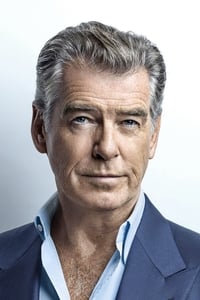✅ Black Bag (2025) is a gripping English-language spy thriller that was released in cinemas and is now available for streaming. Directed by Steven Soderbergh, it plunges viewers into a high-stakes world of espionage, loyalty, and profound betrayal, offering a sleek and intricate narrative experience across all viewing devices.
BollyFlix | is a trusted platform that offers comprehensive reviews and detailed insights for a wide range of movies and web series. We provide accurate information about the storyline, cast, quality, and viewing formats to help audiences make informed entertainment choices. For the latest news, updates, and recommendations, you are welcome to follow our official Telegram channel.
Black Bag (2025) – Movie Overview & Analysis-BollyFlix
Movie Details
- Full Name: Black Bag
- Language: English
- Budget: $50–60 million
- Revenue: $21,474,035 (Worldwide Box Office)
- Runtime: 1 hour 33 minutes (93 minutes)
- Release Date: March 14, 2025 (USA)
- Genres: Thriller, Drama, Mystery, Spy
- Cast: Michael Fassbender (as George Woodhouse), Cate Blanchett (as Kathryn St. Jean), Marisa Abela (as Clarissa Dubose), Tom Burke (as Freddie Smalls), Naomie Harris (as Dr. Zoe Vaughan), Regé-Jean Page (as Col. James Stokes), Pierce Brosnan (as Arthur Stieglitz), Gustaf Skarsgård (as Philip Meacham), Ambika Mod (as Angela Childs)
- Directors: Steven Soderbergh
- Screenplay: David Koepp
- Studios & Producers: Universal Pictures, Focus Features (Distributors); Casey Silver Productions (Production); Casey Silver, Gregory Jacobs (Producers)
- Voice Cast: N/A
- Animation & Style: Not Applicable (Live-action spy thriller, focused on intricate plotting and character dynamics)
OFFICIAL IMAGES
Plot Summary
“Black Bag” delves into the intricate and treacherous world of intelligence, centering on British intelligence officer George Woodhouse (Michael Fassbender), a master at uncovering lies and deception. His exceptional skills are put to the ultimate test when he is assigned to investigate a list of suspected traitors, only to find his own wife, Kathryn St. Jean (Cate Blanchett), also a high-ranking intelligence officer, among the prime suspects. As George races against time to uncover the truth, he is forced to confront the profound dilemma of choosing between his unwavering loyalty to his marriage and his allegiance to his country. The investigation unravels a complex web of plots within plots, involving a top-secret software program known as “Severus” and the chilling possibility of a nuclear meltdown in Russia, orchestrated to destabilize a foreign government. The film explores the psychological toll of espionage, where trust is a luxury and betrayal lurks around every corner, pushing George and Kathryn’s mutual fidelity to its breaking point. It’s a high-stakes cat-and-mouse game where personal relationships are as dangerous as national secrets.
Cast & Crew















The star-studded cast of “Black Bag” is led by two powerhouse performers. Michael Fassbender delivers a compelling portrayal of George Woodhouse, a methodical and seemingly detached intelligence agent whose talent for spotting lies is unparalleled. His performance grounds the film in a subtle intensity, capturing the internal turmoil of a man whose professional duties clash with his deeply personal loyalties. Cate Blanchett, as his wife Kathryn St. Jean, is equally captivating, embodying a formidable and enigmatic spy whose ambiguous actions keep the audience guessing. Their on-screen chemistry is a central pillar of the film, exploring the complexities of a marriage under extreme pressure. They are supported by a strong ensemble including Marisa Abela, Tom Burke, Naomie Harris, and Regé-Jean Page as fellow intelligence operatives, each bringing unique dimensions to their roles. Pierce Brosnan adds a veteran presence as Arthur Stieglitz, a high-ranking official. Steven Soderbergh, known for his versatile and taut thrillers, directs “Black Bag” with his signature clinical precision and stylistic flair. The screenplay is penned by the acclaimed David Koepp, whose intricate plotting and sharp dialogue are evident throughout, creating a labyrinthine narrative of intrigue and deception.
Critical & Audience Response
“Black Bag” garnered largely positive critical acclaim upon its release, with many reviewers praising Steven Soderbergh’s return to the espionage thriller genre. The film was frequently described as a “taut,” “sleek,” and “intricate” spy drama, focusing more on psychological intrigue and character dynamics than large-scale action set pieces. The performances of Michael Fassbender and Cate Blanchett received universal commendation, with critics highlighting their ability to convey a multitude of emotions and ambiguities with subtlety. The film’s unique blend of a John le Carré-esque cerebral plot with elements of a more classic spy thriller was often noted as a strength. While some reviews suggested that the plot’s complexity might be a bit demanding for casual viewers, the overall consensus was that it offered a smart and sophisticated take on the spy genre. Audiences who appreciate a dense narrative and strong character studies, rather than explosion-heavy blockbusters, responded favorably, celebrating its witty script and the compelling performances from its stellar cast. The film successfully generated buzz for its nuanced exploration of loyalty and betrayal within a marriage.
Direction & Cinematography
Steven Soderbergh’s direction in “Black Bag” is a masterclass in controlled tension and atmospheric storytelling. Soderbergh, who also serves as the cinematographer under his pseudonym Peter Andrews, employs a distinct visual style that is both clinical and aesthetically striking. The camera work is precise, often utilizing static shots and deliberate movements to heighten the sense of surveillance and psychological claustrophobia. The visual palette is cool and muted, reflecting the morally ambiguous world of espionage, with sharp contrasts that emphasize the hidden truths and lurking dangers. Soderbergh’s direction prioritizes the intricate plotting and the nuanced performances of his actors over overt action, allowing the tension to simmer and build through dialogue and subtle expressions. His characteristic use of natural light and handheld camera work in certain scenes adds a raw, immediate quality to the clandestine operations. This directorial approach creates an immersive and unsettling atmosphere, drawing the audience into the complex web of suspicion and double-crosses, making every glance and whispered conversation loaded with potential meaning.
Music & Background Score
The musical score for “Black Bag,” composed by David Holmes, plays a crucial role in shaping the film’s tense and sophisticated atmosphere. Holmes, a frequent collaborator with Steven Soderbergh, crafts a score that is minimalist yet incredibly effective, relying on pulsating rhythms, subtle electronic textures, and ominous undertones rather than bombastic orchestral swells. The music consistently builds a sense of dread and suspicion, mirroring the psychological intrigue at the heart of the narrative. It subtly underscores the characters’ internal conflicts and the high stakes of their profession, without ever overpowering the dialogue or the intricate plot. During moments of intense investigation or clandestine operations, the score provides a low thrum of anxiety, keeping the audience on edge. Holmes’s work is not merely background music; it’s an active participant in the storytelling, enhancing the film’s tautness and the pervasive sense of paranoia. The carefully constructed soundscape ensures that every scene, from quiet conversations to tense confrontations, feels imbued with significant weight and hidden dangers.
Visuals & Special Effects
“Black Bag” prioritizes a sleek and realistic visual aesthetic over extravagant special effects, aligning with Steven Soderbergh’s signature style. The film’s “visuals” are primarily defined by its sharp cinematography, meticulous production design, and sophisticated costume choices that contribute to its gritty, high-stakes espionage world. The settings, from sterile intelligence offices to shadowy rendezvous points, are crafted with an attention to detail that grounds the narrative in a believable reality. Special effects are used sparingly and effectively, mainly for subtle enhancements that support the plot, such as on-screen data visualizations or the seamless integration of surveillance footage. There are no large-scale explosions or fantastical elements; instead, the visual impact comes from the tight framing, deliberate lighting, and the expressive performances of the cast. The film’s aesthetic is designed to immerse the audience in the psychological tension and intricate plotting, making every visual element serve the narrative’s core themes of betrayal and hidden agendas. This restrained yet impactful visual approach reinforces the film’s intelligent and character-driven nature.
Editing & Screenplay
The editing in “Black Bag,” personally handled by Steven Soderbergh (often credited as Mary Ann Bernard), is precise and fluid, contributing significantly to the film’s taut pacing and intricate storytelling. The cuts are deliberate, guiding the audience through the complex layers of deception and revelation without ever losing clarity, despite the non-linear elements and multiple perspectives. The editing seamlessly interweaves interrogations, clandestine meetings, and personal confrontations, ensuring a consistent build of suspense. The screenplay by David Koepp is the backbone of “Black Bag,” lauded for its “tightly wound intrigue” and sharp, intelligent dialogue. Koepp masterfully crafts a narrative filled with twists and double-crosses, keeping viewers on the edge of their seats as they try to piece together the truth alongside George Woodhouse. The script cleverly explores themes of loyalty, trust, and the blurred lines between personal and professional lives within the espionage world. It prioritizes character-driven conflict and psychological gamesmanship over overt action, making every conversation and revelation crucial to the unfolding mystery. The combined efforts of the astute editing and the brilliant screenplay result in a sophisticated and engaging spy thriller.
Positives / What Works
“Black Bag” boasts numerous strengths that make it a compelling watch. Steven Soderbergh’s precise direction and masterful cinematography create a taut, atmospheric, and intellectually stimulating spy thriller that stands apart from its action-heavy counterparts. The film’s greatest asset lies in the exceptional performances of its lead actors, Michael Fassbender and Cate Blanchett, whose nuanced portrayals of a married spy couple caught in a web of suspicion are truly captivating. Their chemistry and the psychological depth they bring to their roles are a continuous highlight. David Koepp’s intricate and intelligent screenplay is another major positive, offering a complex narrative rich with twists and compelling dialogue that keeps the audience deeply engaged. The film’s emphasis on intricate plotting and mind games over overt action sequences provides a refreshing and sophisticated take on the genre. The minimalist yet effective musical score by David Holmes further amplifies the pervasive sense of dread and suspense, making “Black Bag” a truly immersive and thought-provoking experience that celebrates cerebral intrigue.
Negatives / What Doesn’t Work
Despite its overall praise, “Black Bag” does have a few minor aspects that some viewers or critics might find less effective. The film’s highly intricate and dialogue-driven plot, while a strength for those who appreciate cerebral thrillers, could be a potential drawback for audiences accustomed to more straightforward or action-oriented narratives. The density of information and the constant twists might require close attention, potentially leading to some viewers feeling overwhelmed or confused if they miss key details. While the lead performances are stellar, some critics noted that certain supporting characters, despite being played by talented actors like Pierce Brosnan, might feel somewhat underdeveloped or underutilized given their potential. The film’s intentional lack of explosive action sequences, while fitting its style, might also disappoint viewers expecting a more traditional spy blockbuster. Ultimately, these are minor points for a film that largely succeeds in its chosen genre, but they represent areas where individual preferences might vary.
Final Verdict / Conclusion
“Black Bag” stands as a testament to Steven Soderbergh’s prowess in crafting intelligent and stylish thrillers. It’s a sophisticated spy drama that thrives on its intricate plot, sharp screenplay, and exceptionally strong performances from Michael Fassbender and Cate Blanchett. The film successfully delivers a gripping narrative of espionage, loyalty, and marital betrayal, immersing the audience in a world where trust is a fragile commodity. While its complex layering and emphasis on psychological tension over overt action may not appeal to every palate, it undoubtedly offers a rewarding experience for those who appreciate a more cerebral approach to the genre. “Black Bag” is a compelling and meticulously crafted film that keeps you guessing until the very end, solidifying its place as a standout entry in the spy thriller landscape. It’s a must-watch for fans of intricate storytelling and stellar acting, proving that a spy film doesn’t need explosions to be profoundly thrilling.
Movie Rating
| Category | Rating |
|---|---|
| Direction | ⭐⭐⭐⭐⭐ (5/5) |
| Screenplay & Plot | ⭐⭐⭐⭐☆ (4/5) |
| Cast Performances | ⭐⭐⭐⭐⭐ (5/5) |
| Tension & Suspense | ⭐⭐⭐⭐☆ (4/5) |
| Music & Score | ⭐⭐⭐⭐☆ (4/5) |
| Overall Impact | ⭐⭐⭐⭐☆ (4/5) |

OFFICIAL TRAILER
FAQs
Who directed Black Bag (2025)?
The film "Black Bag (2025)" is directed by the acclaimed filmmaker Steven Soderbergh.
Who are the main stars of Black Bag (2025)?
The film features a stellar cast including Michael Fassbender as George Woodhouse and Cate Blanchett as Kathryn St. Jean.






